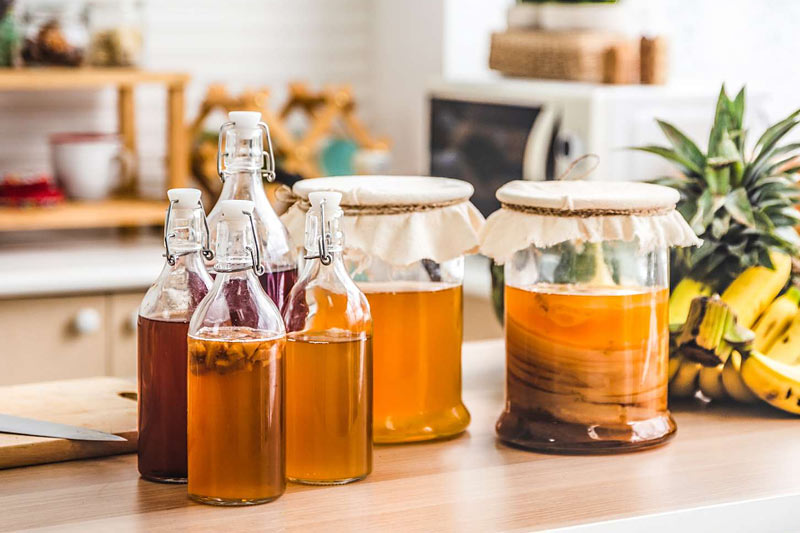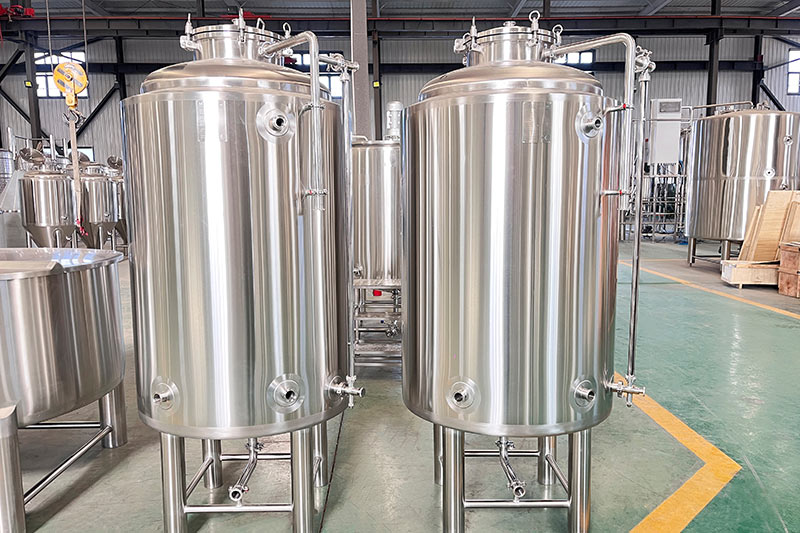Kombucha is a fizzy tea drink that has become popular around the world. Making good kombucha in large batches is not easy. Tanks for kombucha need to be safe, strong, and clean. Let’s talk about the real problems brewers face, what happens if they get worse, and how choosing the right kombucha tanks solves these issues and leads to success.
Brewing Kombucha Is Not Easy
Many Brewers Have the Same Big Problems
Keeping everything clean. If tanks are not cleaned well, germs can grow. Germs spoil kombucha. Many small brewers use simple tanks. These tanks are hard to clean. Around 35% of brewers who do not use special sanitary tanks see contamination in their kombucha .
Getting the right taste each time. You want every batch to taste the same. But it is hard. If the tank can’t keep the right temperature and pH, every batch tastes a little different. In fact, 42% of brewers say keeping pH steady is their top problem .
Growing the business is hard. As demand for kombucha rises, small tanks slow you down. If you try to make more in old tanks, you risk losing quality. Many small breweries don’t have the right tanks to grow with the market .
Too much time cleaning. If tanks do not have the right cleaning system, staff spend a lot of their day washing tanks. Some teams lose up to 24 hours per batch just on tank cleaning.

Bad Tanks Hurt Money and Growth
What Happens When Problems Get Worse?
- Spoiled batches. Spoilage hurts your business. Not only do you lose ingredients, you also lose the trust of your customers .
- Unhappy customers. If each batch tastes different, customers may stop buying your kombucha. They want the same flavor every time .
- Costs go up. Replacing old tanks or throwing away ruined kombucha costs money. Cheap tanks may save money first, but cost more over time .
- You can’t keep up with demand. The kombucha market is growing fast—expected to reach over $11 billion by 2033 . If your tanks can’t keep up, another brewer will take your place .
Modern Kombucha Tanks and Custom Brewing Equipment
Choosing the right kombucha tank is key. Quality tanks make brewing easier, safer, and help your business grow.
Key Features of Good Kombucha Tanks
Feature | Why It Matters |
|---|---|
| Stainless steel 304/316 | Strong, does not rust, clean for many years |
| CIP System (Cleaning in Place) | Saves hours, makes tanks easy to keep sanitary |
| Temperature control | Keeps kombucha at the right temp for best taste |
| Scalable/multiple sizes | Lets you brew more as your business grows |
| Warranty and support | Peace of mind, help if tanks break |
Did You Know?
A high-quality stainless kombucha tank can last over 25 years with proper care.
Using glycol-jacketed tanks for tight temperature control improves pH stability by 40%
Case Study Table: How the Right Tanks Help Real Breweries
| Brewery Challenge | Problem | Result After Switching to Quality Tanks |
|---|---|---|
| Inconsistent Taste | Couldn’t control pH well (old tank) | 98% batch success rate with automated controls |
| Spoilage/Contamination | Manual cleaning missed spots | CIP system cut contamination risk by half |
| Limited Growth | Couldn’t scale with small tanks | Modular systems let brands triple output in 1 year |
| Labor Costs | 1 staff/shift just for cleaning | Labor cost dropped 30% with easier-to-clean tanks |
Table: Comparing Tank Options
| Factor | Premium Stainless Kombucha Tank | Cheap Tank |
|---|---|---|
| Average lifespan | 25 years | 3-5 years |
| Batch consistency | 98% | 60-70% |
| Downtime | Few hours (CIP system) | Up to 24 hours |
| Replace often? | Rarely | Yes, every 3-5 yrs |
| Worth the cost? | Pays off fast | Costs more, long term |

Manufacturing Smarts that Help You Win
Behind every reliable kombucha tank is a great team, smart design, careful testing, and real support. Top equipment makers don’t just sell you a tank—they help you set up your whole brew house. Some companies, like Micet, do all of this in-house, which means:
- Complete brewing solutions: From brewery layout to tank delivery to after-sales help
- Custom setups: Tanks sized for your space and production plan
- Full control: Help solving pH, heat, and cleaning worries before they become expensive
- Global support: Service centers on five continents, warranty, and fast parts if you need them
Who is in charge?
Often, teams are led by specialists who know what brewers need—people with over ten or even twenty years of experience in brewery engineering and design. These leaders help make sure the equipment offered meets tough standards and real-world problems.
Kombucha Tank FAQ (Simple Answers)
Can I use a beer fermenter for kombucha?
Beer fermenters can work, but tanks made for kombucha help manage the SCOBY and longer ferment times better . Kombucha tanks with variable capacity and wide openings make it easier to grow healthy cultures .
How big should my tank be?
If you want to grow, choose a size that lets you brew enough for your biggest order, with at least 10-20% headspace for SCOBY growth . If you’re just starting out, you might like a 100L kombucha fermenter, but big breweries might use a 1000L brewery system.
How do I clean my kombucha tank?
The best tanks use CIP spray balls and smooth welds. This allows quick cleaning that doesn’t miss spots.
What about cost?
It’s true: big tanks can cost much more. But, when you count less wasted kombucha, lower cleaning costs, and fewer ruined batches, they pay for themselves fast. Automated tanks can reduce labor expenses by about 30% .
Kombucha Brewing Equipment for Every Need
If you are just starting, or want to grow big, brewing equipment comes in all sizes. See some options:
| Batch Size | Good for | Example System |
|---|---|---|
| 100L-500L | Small/medium kombucha shops | Kombucha brewing equipment |
| 800L-2000L | Expanding breweries | 1000L brewery equipment |
| 3000L+ | Large commercial outfits | 3000L brewery equipment |
Building for Growth: A Real-World Example
The kombucha market is growing fast—CAGR nearly 17-19% in recent years, and total value could top $11 billion by 2033 . Many small brands have gone from making kombucha at home, to producing thousands of liters each week
If you want to be ready for this growth, using the right tanks and scalable systems is key :
- Flexible tanks for small and big batches
- Clean, automated systems for less downtime
- Support teams that help you succeed, no matter your country

Simple Steps to Choose the Right Tank
- List the batch size you need
- Think about your growth plans (double your size?)
- Choose stainless tanks with smooth welds and CIP if possible
- Pick a supplier that gives you real support and a warranty
- Check if you need temperature/jacket controls—very helpful!
Kombucha Brewing Insights
Market Growth Projection
Equipment Comparison
Common Brewing Challenges
Key Takeaways
Conclusion: Invest in the Right Kombucha Tank
A good kombucha tank saves you time, money, and trouble.
It helps you grow as the market expands, keeps your customers happy, and makes every batch taste just the way you want.
When you work with experienced equipment makers, you get more than metal tanks. You get smart advice, design, and support that solves problems before they start. With over 15 years in the industry, teams like Micet’s have helped set up over 1000 breweries and wineries in 86 countries. Their experienced team aims to help every brewer find the right solution.
Explore More
- Read more about kombucha brewing equipment options.
- Learn about scalable brewery systems for growth.
- See custom tank choices for every business size.
With the right kombucha tank and equipment, your business can brew better, safer, and just keep growing.
